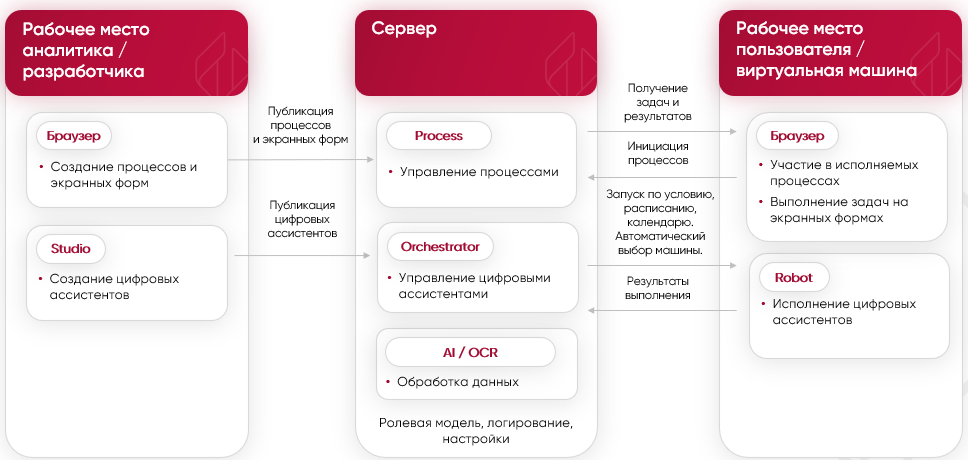История страницы
...
The activity on the platform goes from left to right, from creating digital assistants and workflows based on them, to publishing them on the orchestrator, and then to using the finished workflows on the user's workplace.
- An analyst and a developer create digital assistants in the Studio. For use, the developer publishes the finished assistants to Orchestrator, located on the server.
In the Workflow constructor (web application, part of Robin Process), workflows are built, taking into account the execution logic. The screen form constructor is also available there, and the forms required for the workflow are created there. - Ready workflows and screen forms are published to Orchestrator, just like digital assistants.
- Setting up the schedule/calendar/conditions for launching workflows is done in Robin Process.
- AI and OCR components are already integrated into Studio, and this functionality is immediately available.
- Orchestrator management functionality including role model, logs, task allocation is available for use in a unified Robin Process interface.
- Interaction between the user and the running workflow can be realized in a number of ways. In particular, a web interface is available, in the form of a chat box that displays the tasks to be performed by the employee as part of his participation in the workflow. The workflow screens displayed in progress will allow the user to do their part of the workflow. In this interface, the user can initiate the launch of workflows if their role requires it.
- The Robin robot responsible for the execution of the digital assistant can be installed either on the user's computer or on a virtual host.
Обзор
Инструменты контента

